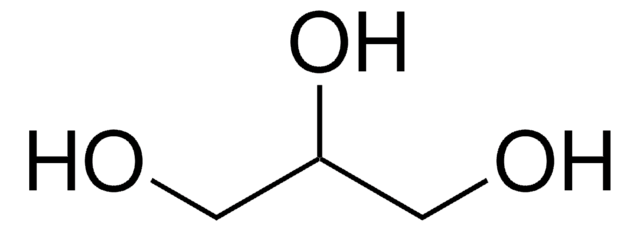Glycerol
Glycerol - C3H8O3
| Class | Polyols |
| Chemical Formula | C3H8O3 |
| Molecular Formula | C3H8O3 |
| Molecular Weight | 92.09 g/mol |
| Optimal Conc | 5% - 20% (v/v) |
Synonyms
Also Known As
Glycerin
Glycerine
Glycyl alcohol
Trihydroxypropane
Grocolene
Glycerol
Is on FDAs GRAS list
Cryoprotectant Use
Glycerol is used in cryopreservation for its properties of lowering the freezing point of solutions and preventing ice crystal formation. It helps maintain cell viability during the freezing and thawing processes by stabilizing cell membranes and reducing osmotic shock.
Applications
Cell Preservation: Glycerol is used in the cryopreservation of a variety of cell types, including red blood cells and sperm cells.
Tissue Preservation: It is used to preserve tissues, such as skin, for transplantation.
Research: In laboratory settings, Glycerol is used to store and preserve cell lines and other biological samples.
Why Use Glycerol Instead of Other Cryoprotectants?
Glycerol is chosen as a cryoprotectant for its unique properties and effectiveness in preserving cells and tissues during cryopreservation. Here are several reasons why Glycerol is preferred over other cryoprotectants:
1. Viscosity
Glycerol has a high viscosity, which provides a protective barrier against ice crystal formation. This helps in reducing mechanical damage to cells during freezing and thawing.
2. Solubility
Glycerol is highly soluble in water, making it easy to mix with various cryoprotective media and providing flexibility in cryopreservation protocols.
3. Established Protocols
There are well-established protocols for using Glycerol in cryopreservation, providing a reliable framework for researchers and clinicians to follow, increasing the success rate of cryopreservation efforts.
Mechanism of Action
Glycerol works by lowering the freezing point of solutions and preventing ice crystal formation within cells. This helps in reducing osmotic shock and mechanical damage during the cooling and thawing processes, thereby maintaining cell viability.
Concentration and Protocol
The concentration of Glycerol used for cryopreservation typically ranges from 5% to 20% (v/v). The exact concentration and protocol may vary depending on the cell type and specific requirements of the preservation process. Generally, cells are suspended in a cryoprotective medium containing Glycerol, cooled slowly to a specific temperature, and then stored in liquid nitrogen.
Safety and Handling
While Glycerol is an effective cryoprotectant, it must be handled with care:
Toxicity: Glycerol is generally considered non-toxic, but high concentrations may cause irritation to the skin and eyes.
Handling: Proper personal protective equipment (PPE), such as gloves and safety glasses, should be worn when handling Glycerol.
Storage: Glycerol should be stored in a cool, dry place away from light and moisture.
Advantages
Viscosity: Glycerol's high viscosity provides a protective barrier against ice crystal formation.
Solubility: It is highly soluble in water, making it versatile for various applications.
Non-Toxicity: It is generally considered non-toxic, making it safe for use in various cryopreservation applications.
Disadvantages
Osmotic Shock: Glycerol may cause osmotic shock in some cell types if not used properly.
Handling: Proper protocols must be followed to ensure safe handling and storage.
Conclusion
Glycerol is a critical cryoprotectant used in the preservation of cells and tissues. Its properties of high viscosity and solubility make it an invaluable tool in both clinical and research settings. However, its use must be carefully managed to ensure optimal results.

Information
CAS number: 56-81-5
Class | Polyols |
Chemical Formula | C3H8O3 |
Molecular Formula | C3H8O3 |
Molecular Weight | 92.09 g/mol |
Optimal Conc | 5% - 20% (v/v) |
Synonyms
Also Known As
Glycerin
Glycerine
Glycyl alcohol
Trihydroxypropane
Grocolene
Glycerol
Is on FDAs GRAS list
